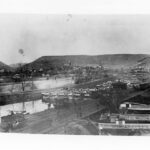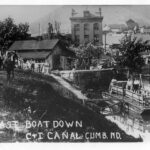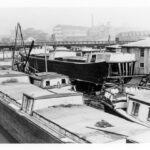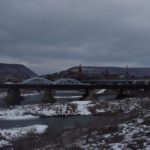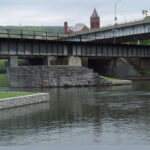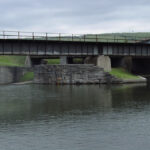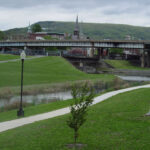All Roads Lead to Cumberland
By Ranger Rita
Cumberland may be the end of the C&O Canal, but it was also once known as the "Gateway to the West." The Potomac River cuts through the mountains in and around Cumberland, providing one of the easiest westward crossings.
In the 1750s, settlers heading west began using the Cumberland Narrows route. It was still a slow and arduous trek over the mountains. In 1811, the Cumberland or National Road was built and movement of goods and people became easier. Finally, starting in 1828, the B&O Railroad and the C&O Canal raced to Cumberland in an effort to reach the Ohio River with an even more efficient transportation system. The B&O Railroad pulled into Cumberland in 1842, followed by the C&O Canal in 1850. By the late 1800s, Cumberland had grown into the second largest city in Maryland largely because of its key location at the junction of the National Road, the C&O Canal, and the B&O Railroad. All roads led to Cumberland.
Today, from the canal towpath at its terminus in Cumberland, you can easily get the sense of Cumberland's importance as a transportation hub. At this location, you have a great view of the Narrows to the west and just across Wills Creek from the terminus is the beginning point of the National Road. The Western Maryland Scenic Railroad rolls past on train tracks over top the canal inlet locks. These tracks were laid by the Western Maryland Railway in the early 1900s, not the mighty B&O. Highway traffic snakes through the city overhead on I-68.
In 2011, Cumberland is celebrating two important anniversaries - C&O Canal National Historical Park's 40th and the National Road's 200th. A transportation forum is part of the National Road anniversary celebration, slated for September 10, 2011, in Cumberland. As part of the event planning committee, I hope you will join us for conversations on Cumberland's continuum of transportation- road, water and rail- and their respective impacts on the city's past, present, and future.
Hopefully one day soon, your road will lead you to Cumberland.
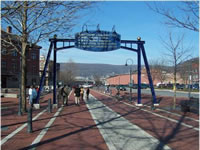
C&O Canal Terminus
Milepost 184.5
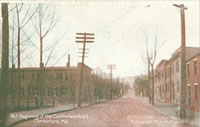
National Road Mile 0
Milepost 184.5
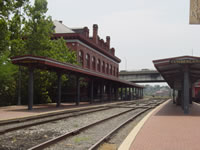
Western Maryland Railway Station
Milepost 184.5

